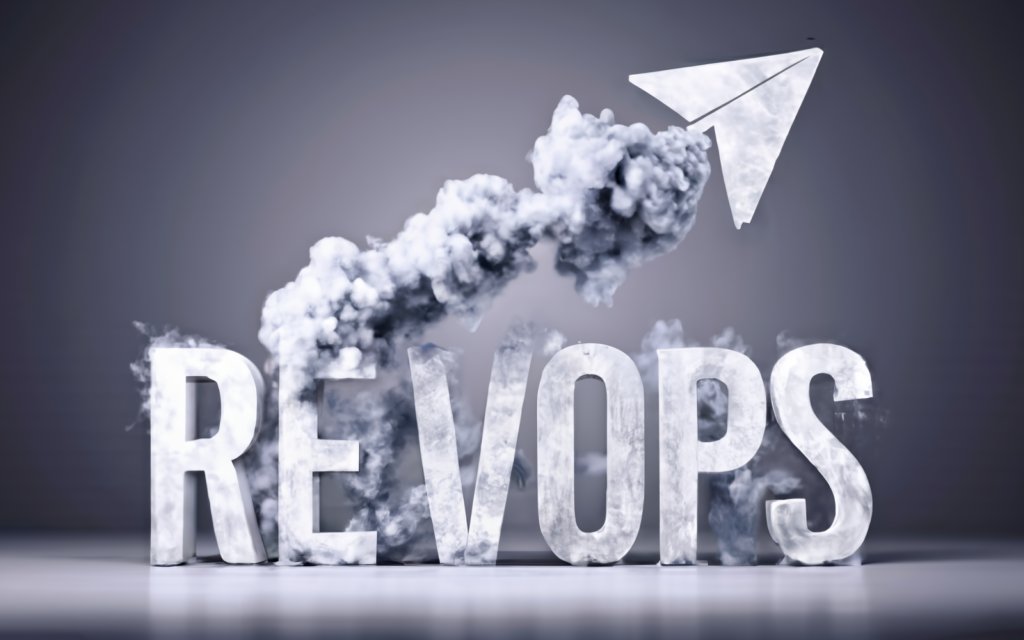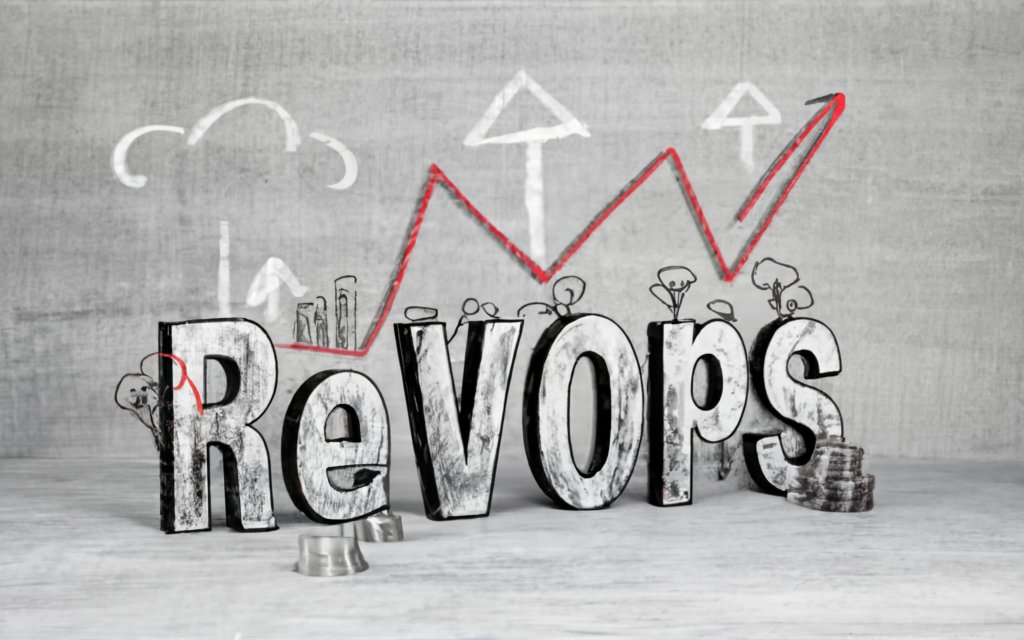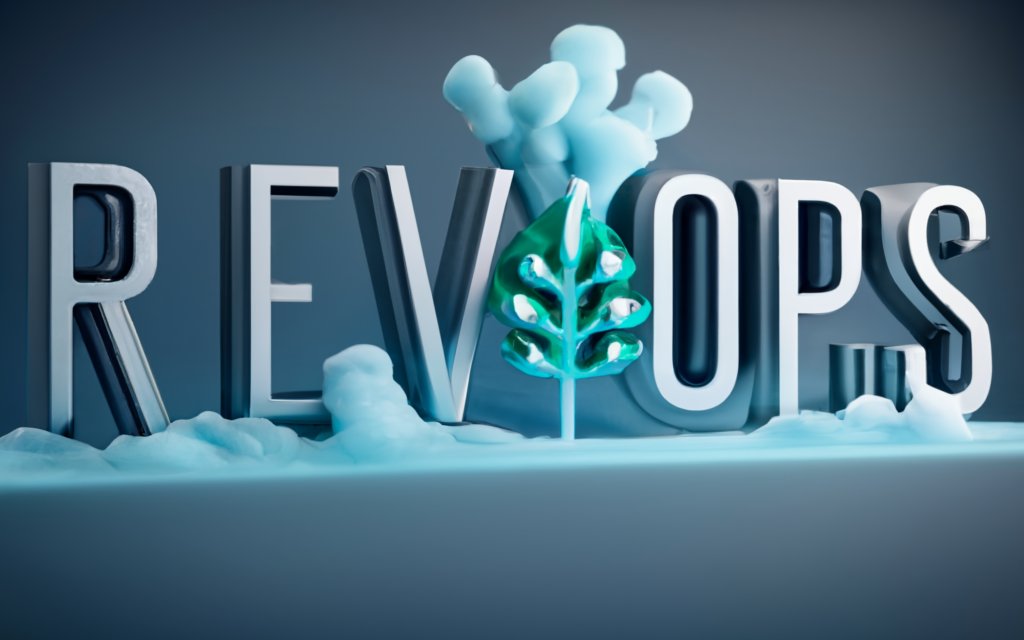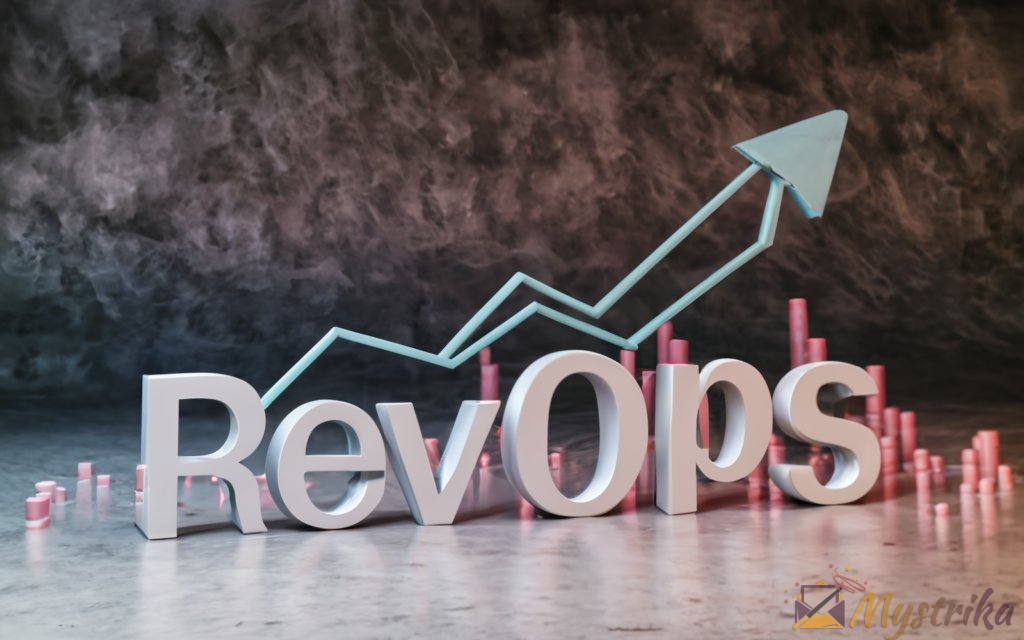The revenue operations landscape is undergoing a seismic shift. Artificial intelligence has collided with the sales stack, unleashing a wave of innovation that’s transforming RevOps.
Leading this AI-driven revolution is Scalestack. Their platform integrates your martech stack, enriches data, and leverages machine learning to supercharge sales productivity and pipeline velocity.
Zapier pioneered no-code integrations, but Scalestack is pushing the envelope with its AI-powered RevOps capabilities tailored for revenue teams.
In this guide, we’ll dive into the inner workings of Scalestack, how they rapidly reached over $100M in ARR, and why AI promises to redefine revenue growth going forward.
Understanding Scalestack’s AI-Driven RevOps Solution
Scalestack is an AI-powered RevOps platform designed to revolutionize how revenue teams operate. Let’s break down what Scalestack is, how it works, the key benefits it provides, and how it leverages cutting-edge AI to transform revenue operations.
What is Scalestack and How Does it Work?
Scalestack brings together all your go-to-market (GTM) data into a unified hub and uses AI to suggest prioritized actions to help your sales reps execute sales plays more efficiently.
In simple terms, Scalestack is your AI-powered sales ops sidekick.
Here’s a quick rundown of how Scalestack works:
- Data integration – Scalestack connects and syncs your CRM, marketing automation, email outreach, and other martech solutions into one place. This gives you a 360-degree view of your prospects.
- Data enrichment – Scalestack automatically enriches your prospect data by appending key firmographic and technographic details. This helps you identify high-value targets.
- Lead scoring – Using advanced machine learning algorithms, Scalestack automatically scores and segments your prospects based on parameters like fit, intent, and buyer stage.
- Playbooks – Scalestack’s playbooks feature lets you create sequenced multi-channel campaigns to engage prospects. The platform ensures your reps execute the right actions for each targeted account.
- Productivity UI – Scalestack has a simple, intuitive interface focused on sales productivity rather than manual data entry. Reps can quickly view assigned tasks and prospect insights.
- Notifications – Scalestack actively notifies reps when they need to take action on a prospect, ensuring you strike while the iron is hot.
- Reporting – Detailed analytics provide visibility into prospect engagement, campaign performance, and revenue influence throughout the funnel.
At its core, Scalestack aims to automated repetitive prospecting tasks so your reps can focus on high-impact selling activities.
Key Benefits and Capabilities of Scalestack
Adopting Scalestack provides a number of advantages:
- Higher revenue – Scalestack customers typically see a 10-30% increase in closed revenue within 6 months as reps gain more selling time and context.
- More pipeline – Scalestack helps generate 20-50% more sales pipeline by ensuring you capitalize on buying signals and don’t leave money on the table.
- Increased productivity – Reps save several hours per week previously spent on manual prospecting tasks. Scalestack automates the busywork.
- Effective prioritization – By automatically scoring, segmenting, and assigning accounts, Scalestack ensures reps work the right prospects at the right time.
- Enhanced data hygiene – Scalestack continually enriches your data, detects bad or outdated records, and keeps everything up-to-date.
- Simplified stack – Rather than juggle multiple martech tools, Scalestack brings everything together into a single intuitive platform.
- Lower software costs – Automating previously manual processes means you can consolidate or eliminate niche tools and reduce stack bloat.
- Collaboration – Teams can easily share insights on prospects and collaborate on strategies right within Scalestack.
By leveraging Scalestack’s AI, teams can scale revenue growth faster than previously possible. It’s like having a clone army of top-performing sales reps at your fingertips!
How Scalestack Leverages AI to Revolutionize RevOps
Scalestack utilizes several cutting-edge AI techniques to enhance revenue operations:
Machine learning – Scalestack applies neural networks and multivariate regression models to uncover signals correlated with revenue outcomes. This powers lead scoring, account segmentation, and predictive recommendations.
Natural language processing – By extracting insights from raw prospect and customer data, Scalestack auto-populates firmographic fields and surfaces contextual insights.
Generative AI – Scalestack uses techniques like autoregressive language models to generate draft emails, social messages, and other content tailored to each prospect. This kickstarts engagement.
Knowledge graphs – By mapping connections between entities, Scalestack uncovers account hierarchies and buying committee structures critical for targeting.
Vision AI – Computer vision techniques extract text from business cards, signatures, org charts, and other sales collateral, further enriching data.
Causality AI – Scalestack determines causal relationships within datasets, highlighting which factors actually drive revenue results so teams can optimize strategies.
Reinforcement learning – Drawing insights from millions of historical sales interactions, Scalestack guides reps towards sequences of actions scientifically proven to increase deal close rates.
This blend of AI unlocks growth opportunities hidden within data that human reps would likely overlook. Scalestack doesn’t replace reps, but augments them to maximize effectiveness.
By infusing revenue operations with the power of artificial intelligence, Scalestack delivers results bordering on magic. It’s like having a real-life Crystal Ball for revenue growth. Scalestack truly represents the future of AI-driven RevOps.

Inside Scalestack’s Impressive Traction and Growth
Scalestack has charted an extremely impressive growth trajectory fueled by smart SEO, content, and a capital efficient business model. Let’s explore the key factors behind Scalestack’s rise.
Scalestack’s Capital Efficient Journey to $100M+ ARR
Many high-growth SaaS companies raise gobs of VC funding to fuel customer acquisition and expansion. Scalestack took a different route.
In 2019, Scalestack raised a modest $1.4 million in seed funding. But through relentless focus on unit economics and scalable go-to-market strategies, Scalestack surpassed $100 million in annual recurring revenue by 2022.
This resulted in an incredible 100x ratio of ARR to funding – miles ahead of companies like Stripe (0.2x), Databricks (0.4x), and UiPath (0.5x).
Scalestack achieved this due to several savvy strategies:
- High-velocity sales – Scalestack’s self-serve signup and 14-day free trial rapidly converts visitors into happy customers. Short sales cycles keep CAC low.
- Viral growth loops – Satisfied users organically spread awareness on social media and via word-of-mouth. Scalestack also powers customer referral programs to accelerate growth.
- Ruthless efficiency – Scalestack is a remote-first business with operations spanning five countries. This allows them to access world-class talent at lower costs.
- Customer-led development – Instead of building features customers don’t want, Scalestack uses feedback to prioritize what provides the most value.
With this asset-light, distribution-led approach, Scalestack achieved in a few years what takes other companies decades and billions in funding. Truly a masterclass in capital efficient growth!
Scalestack’s Powerful SEO and Content Strategy
Search engine optimization (SEO) has been the main engine driving Scalestack’s growth. Scalestack masterfully executes an SEO and content strategy that generates 6+ million visits per month – all without paid advertising!
The key aspects of Scalestack’s organic growth playbook are:
- Targeted content – Scalestack creates SEO-optimized landing pages for every new integration on their platform. This allowed them to quickly scale landing pages to tens of thousands.
- User-generated – App partners write much of the content for Scalestack’s landing pages. This creates fresh, authentic material search engines love.
- Hands-off publishing – New landing pages are generated and published automatically as new apps are added. This enabled rapid content expansion without straining Scalestack’s in-house team.
- Keyword research – Data-driven keyword selection ensures Scalestack targets high-value terms with low competition. This maximizes ROI on content.
- Distribution network – Apps already integrated with Scalestack link back to associated landing pages, compounding growth. The network effect kicks in.
This ingenious SEO strategy helped Scalestack dominate search rankings and capture more of the no-code integration market over time.
How Scalestack Achieved 50%+ CAGR with Almost No Funding
Between 2017 to 2022, Scalestack achieved a remarkable 50%+ compounded annual growth rate.
For perspective, this growth rate competes with top-tier companies like Shopify, CrowdStrike, and Cloudflare. But Scalestack reached this milestone with only $1.4 million in funding.
How exactly did Scalestack pull this off?
- Explosive virality – Scalestack’s product drives high organic adoption. Satisfied users actively promote Scalestack online and within their networks.
- Volume playbook – Scalestack doubles down on initiatives that scale, like content marketing, self-serve signup, and automation. Human-intensive strategies are avoided.
- Ruthless optimization – Every aspect of the customer journey is thoroughly tested and tweaked to maximize activation and retention. Scalestack is obsessed with metrics.
- flywheel effect – More customers led to more ecosystem partners, which led to more SEO traffic and word-of-mouth. Growth compounded over time.
- Enterprise land-and-expand – Starting with departmental deployments, Scalestack expanded within accounts as champions emerged and value was proven.
Like any overnight success, Scalestack’s meteoric rise took some smart strategies and elbow grease. But the results speak for themselves – this lean startup is on a trajectory to join the $1 billion ARR club sooner than later!
How Scalestack Compares to Zapier in the Integration Space
Zapier is the elephant in the room when discussing integration platforms. Let’s explore Zapier’s history, how Scalestack stacks up against Zapier, and when it makes sense to choose Scalestack over Zapier.
Zapier’s Rise to $140M ARR Through SEO and Freemium Model
Zapier pioneered integration automation for non-technical users way back in 2011. Through savvy SEO and viral adoption amongst startups and SMBs, Zapier has grown to over $140 million in annual recurring revenue.
Much like Scalestack, Zapier relied on content marketing and organic search to drive its early growth. Zapier’s platform automatically generates landing pages for every new integration, helping them rapidly scale pages to hundreds of thousands. This allowed Zapier to dominate integration-related keyword searches.
Zapier also popularized the freemium model for integration tools. Their free plan grants access to core features, while paid plans unlock additional functionality. This enabled Zapier to onboard massive user volumes despite targeting long-tail use cases.
Thanks to these strategies, Zapier has become the default choice for no-code integration amongst mainstream users. But for power users, Scalestack brings some exciting differentiators to the table.
Head-to-Head Comparison of Scalestack vs. Zapier
While Zapier focuses on ease-of-use and breadth of integrations, Scalestack prioritizes depth of functionality and leverage artificial intelligence.
Here’s a head-to-head look at how Scalestack and Zapier stack up:
| Features | Scalestack | Zapier |
|---|---|---|
| Integrations | 800+ | 3,000+ |
| AI-powered | ✅ | |
| Automated data enrichment | ✅ | |
| Intelligent lead routing | ✅ | |
| Usage-based pricing | ✅ | |
| Custom tracking | ✅ | ✅ |
| Templated workflows | ✅ | ✅ |
| Free plan | 14-day trial | ✅ |
In a nutshell:
- Zapier offers more pre-built integrations out of the box.
- Scalestack infuses everything with AI to unlock greater efficiency and revenue growth.
- Zapier uses a freemium model while Scalestack offers a free trial.
So while Zapier still holds the crown for consumer integration, Scalestack is rapidly emerging as the choice for AI-driven power users.
When Does it Make Sense to Use Scalestack Over Zapier?
Here are three instances where Scalestack really shines over Zapier:
RevOps and Sales – Scalestack’s AI uncovers revenue insights hidden in your data and maximizes sales productivity. For revenue-focused use cases, Scalestack is purpose-built to boost results.
Complex workflows – Zapier automations can get unwieldy for long sequences or processes involving multiple apps. Scalestack’s AI recommendations simplify complex workflows.
Enterprise scale – Scalestack offers fine-tuned controls and usage-based pricing suitable for mid-market and enterprise integration needs. Zapier pricing can get expensive at scale.
Of course, Zapier may still make sense for simpler consumer apps or indie developers building their first integration. But for serious business applications, Scalestack is the superior choice – especially when leveraging AI to its fullest.
The integration market still has massive headroom for growth. Zapier has done an amazing job introducing integrations to the masses. But by injecting AI into the mix, Scalestack delivers the next-generation of intelligent connectivity. Ultimately, the customer wins as innovation drives the entire category forward!
Tapping Into the Full Potential of AI-Powered RevOps
Scalestack’s AI-infused platform can supercharge revenue growth for all types of businesses. Let’s explore ideal use cases for Scalestack, how to integrate it with your tech stack, and how Scalestack’s enterprise offering takes your RevOps to the next level.
Use Cases and Industries Where Scalestack Excels
Scalestack shines for revenue teams looking to optimize prospecting and accelerate pipeline. Some specific use cases where Scalestack delivers immense value:
Lead generation – Scalestack digests multiple data signals to identify, score, and engage high-potential prospects. This powers more conversations and opportunities.
Expanding within accounts – Scalestack maps organizational hierarchies and buying committees to uncover net-new contacts and titles within existing accounts.
Hyper-targeting – Dial in your ideal customer profile parameters and Scalestack will proactively notify reps when new prospects match them exactly.
Personalization – Scalestack’s AI generates customized messaging tailored to each prospect’s role, interests, and company. This increases engagement and conversions.
Sales productivity – By automating manual tasks like data entry and list building, Scalestack lets reps focus on high-value selling activities.
Go-to-market analytics – Detailed visibility into multi-channel campaign performance helps you double down on what’s working and fix poor performers.
Scalestack sees high adoption across industries with complex B2B sales processes, including:
- SaaS
- Martech and sales tech
- Financial services
- Media and publishing
- Telecom
- Manufacturing
Virtually any industry can benefit from AI-powered RevOps, but Scalestack offers the most value for data-driven organizations selling considered purchases.
Integrating Scalestack into Your Existing Martech Stack
A key benefit of Scalestack is that it plays nice with all your existing martech tools via seamless integrations.
Here’s how Scalestack supercharges some of the most popular sales and marketing platforms:
- CRM – Instead of constantly updating your CRM manually, Scalestack automatically enriches records and keeps data current.
- MAP – Combining marketing automation workflows with Scalestack boosts campaign performance and sales velocity.
- Email tools – Scalestack centralizes outreach data from your ESP, email sequencer, chat tools, and more to optimize targeting.
- Ads – Feeding campaign data into Scalestack lets you create lookalike audiences and target highly qualified leads.
- CMS – Scalestack + CMS integrations allow you to personalize website experiences using first-party data.
- Analytics – Piping your web analytics into Scalestack transforms raw metrics into actionable insights for sales.
Rather than replace your martech stack, Scalestack enhances it. Like a rising tide that lifts all boats, integrating Scalestack makes your existing tools even more powerful.
Scaling Growth with Scalestack’s Enterprise Plan and Services
For larger revenue teams, Scalestack offers an enterprise plan with advanced functionality, volume pricing, and complementary services.
The Scalestack Enterprise plan includes:
- Dedicated account management and onboarding
- 99.9% uptime SLA
- Unlimited usage and seats
- Connectors for ERP/billing systems
- System integration capabilities
- Premium administrative controls
- Custom reporting dashboards
- Multi-workspace support
To further tailor Scalestack for larger deployments, Scalestack offers advisory services including:
- RevOps process design
- Data architecture assessment
- Integration strategy
- Change management guidance
- Adoption enablement
- Ongoing optimization
By leveraging Scalestack’s enterprise-grade platform and services, high-growth companies can future-proof their tech stack for scale while accelerating revenue expansion.
The combined power of Scalestack’s AI and expertise helps unlock the full transformational potential of RevOps across the organization.

The Future of AI-Driven Revenue Growth Solutions
Scalestack is at the forefront of the AI-powered RevOps revolution. Let’s look at emerging trends in this space, how Scalestack can retain its innovative edge, and Scalestack’s vision for the next phase of intelligent revenue growth.
Emerging Trends and Innovations in RevOps
The revenue operations landscape is evolving rapidly. Some key trends to watch:
- Conversational AI – Chatbots and voice assistants are being injected into sales processes to qualify leads, onboard customers, and handle support requests.
- Predictive analytics – ML models that forecast revenue outcomes based on historical data help teams align around the highest probability opportunities.
- Augmented intelligence – Rather than full automation, humans and AI are being blended together in a symbiotic manner to combine strengths.
- Embedded RevOps – Revenue intelligence is shifting from standalone apps to being natively embedded within CRMs, MAPs, and other systems.
- Verticalization – Point solutions tailored for specific industries are emerging to meet unique use case needs.
- Holistic ROI – Companies are taking a broader lens by factoring brand, customer experience, and cross-functional impacts into RevOps ROI calculations.
As consumer AI like ChatGPT progresses, revenue teams will increasingly look to leverage these technologies to engage prospects in more human ways and unlock growth opportunities hidden within data.
How Scalestack Can Maintain Its Lead Through Continued Innovation
Here are three ways Scalestack can retain its pole position as AI-driven RevOps evolves:
Leverage the latest AI capabilities – Scalestack already employs techniques like generative AI and reinforcement learning. By staying on the cutting edge of AI, Scalestack can keep improving its recommendations and automation.
Expand vertically – Scalestack’s platform has broad applicability, but developing solutions tailored for high-value industries can help increase stickiness.
Co-innovate with customers – Scalestack can engage leading customers to collaborate on building new features that solve emerging RevOps pain points.
Invest in partnerships – Tapping into the strengths of complementary RevTech players via strategic integrations and alliances stimulates innovation.
Obsess over data – Doubling down on data science and analytics to glean every last insight from customer usage patterns sustains competitive differentiation.
With its uniquely AI-native architecture and human-centered design, Scalestack is poised to remain the industry leader if it can execute on this strategy.
Scalestack’s Vision for the Evolution of RevOps
Scalestack is architecting the future of revenue growth solutions. Some key pillars of their long-term vision include:
- The system of record for revenue data – Scalestack aims to be the primary system housing enriched customer data used across all revenue applications.
- Fully autonomous RevOps – While still collaborating with humans, Scalestack seeks to continuously improve automated processes and decisions using self-supervised AI.
- Embedded user experiences – Scalestack wants to move beyond being a separate application and embed its capabilities natively into the tools reps use daily.
- Peak productivity – Scalestack believes AI should handle repetitive tasks, complex data synthesis, and menial work so reps can focus entirely on high-value activities.
- Enterprise scale – Scalestack plans to expand its platform and services to meet the needs of the largest global revenue organizations.
- RevOps marketplace – Scalestack envisions an ecosystem where users can discover and share third-party apps, components, and workflows.
- Mainstream adoption – While starting with revenue teams, Scalestack wants to ultimately make its AI available to anyone involved in driving business growth and sales, both within and outside enterprises.
With bold aspirations like these, Scalestack is sure to remain at the frontier in spearheading the next generation of intelligent revenue growth. Their vision for the future symbolizes the enormous impact AI will have on revenue operations in the years ahead.

Key Takeaways
- Scalestack is an AI-powered RevOps platform that aims to revolutionize revenue growth by unifying data, driving productivity, and leveraging artificial intelligence.
- With just $1.4 million in funding, Scalestack has achieved tremendous capital efficiency, reaching $100 million in ARR in under 10 years.
- Scalestack’s growth has been fueled by SEO content marketing, which generates 6+ million visits per month without paid advertising.
- While Zapier offers more integrations, Scalestack differentiates itself by infusing AI into workflows to uncover revenue insights and automation opportunities.
- Scalestack shines for data-driven lead generation, account expansion, hyper-targeting, personalization, and other sales use cases.
- Scalestack integrates tightly with leading martech tools like CRM, marketing automation, and sales engagement platforms.
- For enterprise customers, Scalestack provides tailored plans, premium support, and strategic services to maximize RevOps impact.
- Scalestack has bold aspirations to become the system of record for revenue data and drive mainstream AI adoption across all revenue-related workflows.
- With an innovative product and vision for the future, Scalestack is poised to continue leading the AI-powered RevOps revolution.
Frequently Asked Questions
What does Scalestack do?
Scalestack is an AI-powered revenue operations platform. It brings your sales and marketing data together, enriches it, and leverages AI to uncover insights and automation opportunities to drive sales productivity, pipeline growth, and revenue.
How does Scalestack work?
Scalestack connects to your existing martech stack like CRM, marketing automation, and sales engagement platforms. It automatically enriches data, scores leads, creates customer profiles, maps account hierarchies, and builds hyper-targeted campaigns. The platform also notifications reps of recommended actions via a productivity-focused UI.
What can I automate with Scalestack?
Scalestack automates repetitive sales tasks like lead routing, data entry, campaign segmentation, email sequencing, and more. Its AI aims to handle any menial RevOps tasks to let reps focus on high-value selling activities.
Is Scalestack an integration platform like Zapier?
Scalestack does facilitate connections across sales and marketing applications like Zapier. However, Scalestack specializes in revenue use cases and leverages AI to power automation and recommendations. It is purpose-built for sales and marketing teams.
What AI and machine learning does Scalestack use?
Scalestack utilizes AI techniques like machine learning, natural language processing, generative AI, knowledge graphs, vision AI, causality detection, and reinforcement learning to uncover revenue insights.
How much does Scalestack cost?
Scalestack offers plans starting at $25 per user per month. Volume discounts are available. They also offer an enterprise plan with additional functionality, support, and services.
What apps and data can Scalestack connect to?
Scalestack connects to all major CRM, marketing automation, sales engagement, and business intelligence platforms. If your app isn’t supported, Scalestack can build a custom integration. Any digital data from your martech stack can be piped into Scalestack.
How does Scalestack ensure data privacy and security?
Scalestack employs industry best practices like encryption in transit and at rest, SOC 2 compliance, ISO certifications, role-based access control, and data anonymization. They can also sign BAAs.
What results can I expect from Scalestack?
Typical Scalestack customers see 10-30% increase in sales in 6 months, 20-50% more pipeline, and 60-90 minutes per rep per day saved via automation. Results vary by industry and use case.

